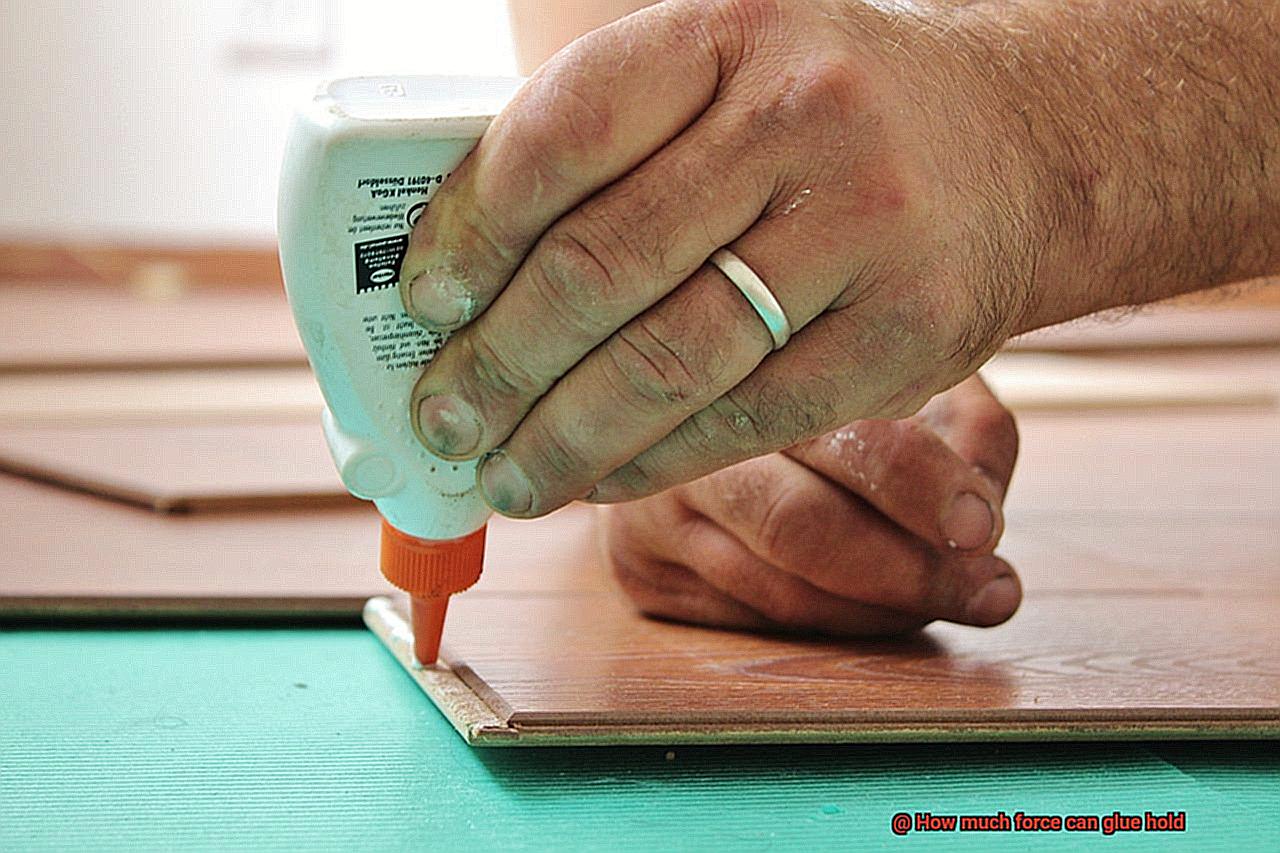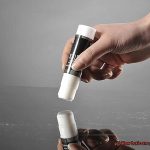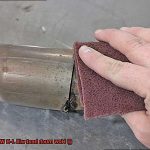Curious about the mind-blowing might of glue?
That sticky stuff we often overlook is actually a force to be reckoned with.
It’s the unsung hero that saves our broken toys and fixes our shattered ceramics. But have you ever wondered just how much force it can handle?
Brace yourself for some jaw-dropping revelations as we dive into the world of glue and uncover its incredible strength. In this blog post, we’ll unravel the secrets of its adhesive prowess, explore its diverse applications in different industries, and drop some mind-boggling facts about this humble adhesive.
Get ready to be glued to your screens as we embark on a thrilling journey through the captivating world of glue and its remarkable holding power.
What is Glue?
Contents
- 1 What is Glue?
- 2 Types of Glue and Their Strengths
- 3 Factors That Affect the Strength of a Bonded Joint
- 4 Maximum Force Tests Conducted by Manufacturers
- 5 Real World Applications vs Laboratory Conditions
- 6 Important Considerations When Using Glue
- 7 Superglue: Uses and Advantages
- 8 Epoxy: Uses and Advantages
- 9 Wood Glue: Uses and Advantages
- 10 Conclusion
Glue is a remarkable and versatile substance that has been used for centuries to join or bond materials together. It is the secret ingredient that holds our world together, from repairing broken pottery to constructing towering skyscrapers. But what exactly is glue, and how does it work its magic?
At its core, glue is an adhesive substance that creates a chemical bond between the molecules of the adhesive and the surfaces being bonded. This bond is what gives glue its incredible strength and durability. But how does glue achieve this?
The secret lies in the carefully crafted combination of ingredients that make up glue. One of the main components is a polymer, a long chain of molecules that gives glue its stickiness and enables it to adhere to different surfaces. Depending on the specific application and materials being bonded, different types of polymers are used.
But polymers aren’t the only players in the glue game. Glue also contains solvents, fillers, and additives. Solvents keep the glue in a liquid or gel form and aid in its application. Fillers adjust the viscosity or thickness of the glue, making it easier to use. And additives enhance specific properties of the glue, such as flexibility or resistance to heat and moisture.
With this carefully balanced blend of ingredients, glue works by creating a chemical reaction between the adhesive molecules and the molecules of the surfaces being joined. As the glue dries and hardens, these molecules interlock, forming a strong and durable bond.
Now let’s explore some different types of glues and their specific properties. Super glue, also known as cyanoacrylate adhesive, is famous for its quick-drying and strong bonding capabilities. It can withstand significant force and is commonly used for bonding materials like metal, plastic, and ceramics.
For woodworking projects, there’s wood glue, also known as carpenter’s glue or PVA glue. While it may not have the same level of strength as super glue or epoxy, it still holds up well under moderate force and is ideal for woodworking applications.
Speaking of epoxy, epoxy adhesives are known for their exceptional strength and resistance to heat, chemicals, and moisture. They are often used in industrial applications where a high level of strength is required.
It’s important to note that the strength of a glue bond can be influenced by external factors such as temperature and humidity. Extreme temperatures or high levels of moisture can weaken the bond over time, reducing its overall strength. Therefore, it’s crucial to consider these factors when choosing the right glue for your project.
Types of Glue and Their Strengths
Glue is not just a sticky substance; it’s a powerful tool that can bring things together. From super glue’s instant bond to epoxy adhesive’s immense strength, there is a glue for every project. By understanding the different types of glue and their strengths, you can confidently choose the right adhesive for your needs. In this article, we will explore the various types of glue and their unique properties.
Super Glue: Instant Bonding Power
When it comes to instant bonding power, super glue takes the crown. It’s like magic. Super glue, also known as cyanoacrylate adhesive, forms a strong bond within seconds and can hold up to moderate force. It’s perfect for fixing small items like broken toys or mending jewelry. Just be careful not to stick your fingers together.
Epoxy Adhesive: The Test of Time
If you need a bond that can withstand the test of time, epoxy adhesive is your go-to. This two-part adhesive is known for its incredible strength and durability. When mixed together, the resin and hardener create a chemical reaction that results in a rock-solid bond. Epoxy is often used for heavy-duty applications like bonding metal or concrete.
Wood Glue: Exceptional Strength for Wood Surfaces
Woodworking enthusiasts, rejoice. Wood glue is specially formulated to bond wood surfaces together with exceptional strength. It sets within hours and achieves maximum strength in 24 hours. Wood glue can handle considerable force and is resistant to moisture, making it ideal for indoor and outdoor projects alike.
Hot Glue: Versatile and Quick
Hot glue may not be the strongest adhesive out there, but it sure is versatile. Applied with a hot glue gun, this glue solidifies quickly upon cooling and forms a strong bond on various materials like fabric, plastic, and foam. It’s perfect for all your crafting needs.
Silicone Adhesive: Flexibility and Durability
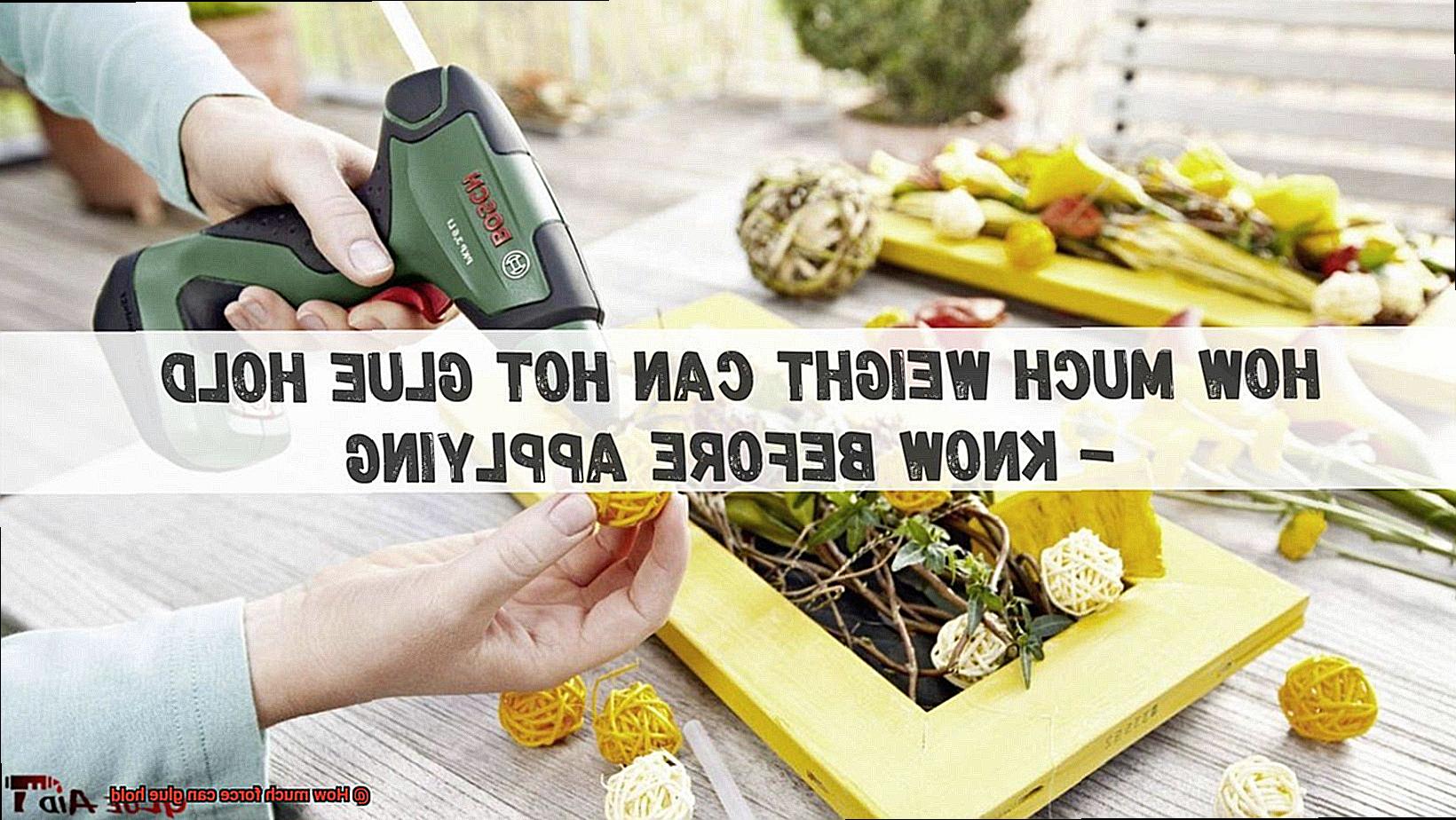
When it comes to flexibility and durability, look no further than silicone adhesive. This glue can withstand extreme temperatures and is often used in automotive or plumbing repairs. It forms a strong, watertight seal and can handle moderate force.
Factors That Affect the Strength of a Bonded Joint
In this article, we will delve into the key factors that affect the strength of a bonded joint. So, grab your adhesive and let’s get started.
Surface Preparation:
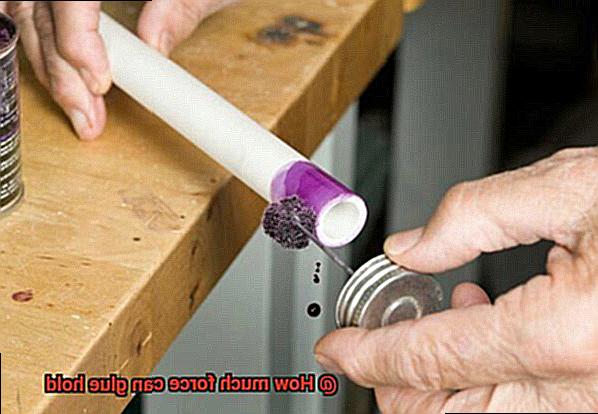
Proper surface preparation is crucial for achieving a strong bond. Clean, dry, and contaminant-free surfaces are a must. Use solvents or abrasives to remove grease, rust, or any other contaminants. Creating a rough surface can enhance adhesion by providing more surface area.
Adhesive Selection:
Not all glues are created equal. The type of adhesive you choose plays a vital role in determining bond strength. Epoxy adhesives offer high strength and durability, making them ideal for heavy-duty applications. Cyanoacrylate adhesives provide fast bonding times but may not be as strong in certain situations. Consider the properties of each adhesive type and select the one that best suits your project’s requirements.
Substrate Material:
The materials being bonded can greatly impact bond strength. Some materials naturally have better bond strength than others. Metals and certain plastics are known to have good bonding properties. Additionally, the compatibility between the adhesive and the substrate is crucial. Rough or porous surfaces provide increased surface area for bonding, leading to stronger joints.
Joint Design:
The design of the joint itself can make or break the strength of the bond. The size, shape, and contact area between the surfaces being bonded all contribute to overall bond strength. Ensuring sufficient contact area allows the adhesive to create a strong, uniform bond.
Curing Time and Conditions:
Impatience can be detrimental to bond strength. Adhesives require specific curing times to reach their maximum strength. Follow the manufacturer’s guidelines and allow sufficient time for the adhesive to cure. Curing conditions, such as temperature and humidity, also play a role. Optimal temperature and humidity levels during curing ensure a strong bond.
Environmental Factors:
Consider the environment in which the bonded joint will be exposed. Factors like temperature, humidity, and exposure to chemicals or UV radiation can affect bond strength over time. Choose an adhesive that is suitable for the anticipated environmental conditions to ensure long-term bond strength.
Maximum Force Tests Conducted by Manufacturers
Maximum force tests conducted by manufacturers are essential in ensuring the strength and reliability of glue products. These tests provide valuable information about a glue’s ability to withstand various forces, such as tension, shear, peel, and impact. By subjecting their glues to rigorous testing, manufacturers can confidently guarantee their products’ performance and durability.
One of the primary tests conducted by manufacturers is the tensile strength test. During this test, a specific amount of force is applied to a bonded material until it breaks or separates. By measuring the force required to break the bond, manufacturers can determine how much weight their glue can bear. This test is crucial for applications that require glues capable of holding heavy materials together.
In addition to tensile strength, manufacturers also test for shear strength. Shear forces attempt to slide or shear one part of a bonded material relative to another. To evaluate a glue’s resistance to shear forces, manufacturers subject a bonded material to sliding force and measure the force required to cause movement. This ensures that glues can hold materials firmly in place, even when faced with sliding or shearing forces.
Peel tests are another important part of maximum force testing. In this test, two materials bonded together are pulled apart at an angle, simulating a peeling motion. The force required to separate the materials gives manufacturers an idea of how well their adhesive can resist peeling forces. This is particularly crucial for applications where surfaces may be constantly pulled apart, such as in packaging or construction.
Different types of glues may also undergo impact resistance tests. These tests involve striking a bonded material with a specific force to evaluate how well the adhesive holds up under sudden impacts. This helps manufacturers determine if their glue is suitable for applications where materials may experience sudden shocks or jolts.
Manufacturers conduct these maximum force tests using specialized equipment designed for accuracy and consistency. They follow strict testing protocols and standards set by industry organizations, such as ASTM International, to ensure reliable and comparable results across different glue products. The results of these tests are then provided to consumers in product specifications or technical data sheets, allowing them to make informed decisions about which glue to use for their specific needs.
Real World Applications vs Laboratory Conditions
Glue, that magical adhesive that binds our world, is a versatile tool used in countless applications, from arts and crafts to heavy-duty construction. But have you ever wondered how glue is tested for its strength? In this fascinating exploration, we will delve into the intricate world of glue testing and uncover the differences between real-world applications and laboratory conditions.
Laboratory Conditions: The Controlled Environment
In the pristine realm of the laboratory, scientists meticulously manipulate various factors to measure the strength of glue under ideal circumstances. Temperature, humidity, and pressure are precisely regulated to ensure consistency. Specific amounts of force are methodically applied to bonded materials, and the breaking point is measured with scientific precision. This controlled approach allows for accurate comparisons between different glues.
Real-World Applications: The Unpredictable Factors
While laboratory testing provides valuable insights, real-world applications present a more complex and challenging environment for glue. One key factor lies in the diverse range of materials being bonded. Smooth plastic may form an unyielding bond, but porous materials like wood pose a different challenge. Their innate porosity affects adhesion, potentially weakening the bond and requiring careful consideration.
Environmental Conditions: The Climate Factor
The climate in which glue is used plays a significant role in its performance. Extreme temperatures or high humidity levels can relentlessly compromise the adhesive properties over time. Choosing a glue that is aptly suited for the intended environment becomes crucial for achieving optimal results and durability.
External Stressors: Forces at Play
Unlike the controlled conditions of a laboratory, real-world applications subject glued materials to dynamic forces and stressors. Vibrations reverberate through structures, impacts jar fragile bonds, and constant movement relentlessly strains the adhesive union. Selecting a glue that can steadfastly withstand these external forces becomes paramount for long-term durability.

Application Technique and Surface Preparation: The Art of Bonding
In the realm of real-world applications, the art of bonding extends beyond the properties of the glue itself. Proper surface preparation is key to achieving a robust bond. Surfaces must be meticulously cleaned, roughened, and primed to enhance bond strength and durability. The application of glue in an even manner, coupled with sufficient curing time, further fortifies the bond, ensuring its longevity.
Important Considerations When Using Glue
Glue, the magical adhesive that has transformed the way we repair, create, and construct. From mending shattered ceramics to crafting intricate models, glue is a go-to solution for countless purposes. However, achieving optimal results requires careful consideration of several crucial factors. In this article, we will explore the important considerations that can make or break your glue bonding experience.
Know Your Materials:
Glue comes in various types, each designed for specific materials such as wood, metal, plastic, or fabric. Choosing the wrong glue can result in weak adhesion or even damage to the surface. Always check the label and select a glue that is compatible with the material you are working with.
Surface Preparation:
For a strong bond, proper surface preparation is key. Thoroughly clean the surfaces, eliminating any dirt, grease, oil, or moisture that could hinder adhesion. A clean and dry surface provides the best foundation for glue bonding.
Consider Temperature and Humidity:
Temperature and humidity can significantly affect glue effectiveness. Some glues work better within specific temperature ranges or may be more sensitive to changes in humidity. Follow the manufacturer’s instructions regarding environmental conditions to achieve optimal bonding strength.
Application Techniques:
The method of applying glue can influence its effectiveness. Depending on your project requirements, you may need to apply the glue evenly across the entire surface or use specific techniques like dotting or spreading. Always follow recommended application instructions for maximum bonding strength.
Time and Pressure:
Allow sufficient curing time for the glue to reach its maximum strength. Applying pressure during this period enhances the bond by ensuring proper contact between the adhesive and the surfaces being bonded. Remember, patience is key for a strong and durable bond.
Strength Requirements:
Different glues offer varying levels of strength. Consider the intended use of your project and choose a glue that can withstand the expected force or stress. Some glues are ideal for heavy-duty applications, while others are better suited for lighter tasks.
Safety First:
Always prioritize safety when using glue. Some adhesives may contain harmful chemicals or emit fumes. Work in a well-ventilated area and use protective equipment, such as gloves or goggles, as recommended by the manufacturer.
Superglue: Uses and Advantages
Superglue: The Superhero of Adhesives
Superglue, also known as cyanoacrylate adhesive, is a versatile adhesive that is a game-changer when it comes to bonding. What makes superglue so super? Let’s dive into its uses and advantages:
- Lightning-fast bonding: Superglue forms a strong bond in seconds, saving you time and frustration.
- Versatility at its finest: Whether you’re working with metal, plastic, glass, ceramics, rubber, or even some fabrics, this adhesive has got you covered.
- Water and chemical-resistant: Superglue can withstand exposure to water, heat, and many solvents without losing its grip.
- Saving the day in emergencies: Superglue can be used to seal cuts or wounds in emergency situations, reducing the risk of infection until medical help arrives.
- Crafting magic: Superglue is perfect for DIY enthusiasts or craft lovers. Its quick drying time allows for efficient work without the need for clamps or extended drying periods.

Epoxy: Uses and Advantages
In the vast world of adhesives, epoxy stands as a superhero, wielding exceptional bonding properties and unrivaled versatility. From construction projects to automotive applications, epoxy adhesives have become an integral part of various industries. Let’s embark on a journey to explore the vast uses and remarkable advantages of this extraordinary adhesive.
Unyielding Strength:
A paramount advantage of epoxy lies in its ability to bear an immense amount of force. When skillfully applied, it creates a bond that surpasses the very materials it joins together. This makes it a perfect choice for structural bonding applications, such as reinforcing concrete structures or bonding metal components.
Chemical Resistance:
Epoxy adhesives exhibit an unyielding resistance to chemicals and solvents. They fearlessly endure exposure to a wide range of substances without sacrificing their bonding properties. This makes them ideal for applications where the adhesive will encounter harsh chemicals, ensuring durability and unwavering reliability.
Gap-Filling Magic:
Unlike ordinary adhesives, epoxy possesses the enchanting ability to penetrate and fill gaps effectively due to its low viscosity when mixed. It effortlessly weaves its way into every nook and cranny, creating a seamless surface that minimizes stress concentrations at the joint interface and guarantees an unbreakable bond. This sorcery makes it particularly suitable for woodworking or repairing damaged surfaces where precise bonding is required.
Temperature Tolerance:
Epoxy adhesives fearlessly face extreme temperatures without compromising their formidable bonding strength. Whether exposed to scorching heat or bone-chilling cold, epoxy remains steadfast in its mission. This remarkable quality makes it indispensable in industries where temperature fluctuations are common, such as aerospace or automotive manufacturing.
Electrical Insulation:
Epoxy boasts exceptional electrical insulation properties, making it an ideal choice for electrical applications. It fearlessly insulates electrical components, shielding them from the perils of electrical leakage or short circuits. With epoxy adhesives, bonding wires or encapsulating electronic components becomes an effortless endeavor, fortified by the unwavering protection they provide.
Wood Glue: Uses and Advantages
In the world of woodworking, there is a silent hero that holds everything together – wood glue. This versatile adhesive is specifically formulated for bonding wood surfaces, making it an indispensable tool for any woodworking project. Let’s delve into the myriad uses and advantages of this incredible adhesive.
Strength is the backbone of wood glue’s advantages. It possesses the remarkable ability to withstand substantial amounts of force, making it perfect for joining pieces of wood in furniture, cabinets, and crafts. When applied, wood glue penetrates the wood fibers, creating a bond that is often stronger than the wood itself. Imagine a high-quality wood glue that can hold up to an impressive 3,000 pounds per square inch (psi) of pressure when properly applied. That’s some serious strength.
Wood glue also excels at filling gaps and providing structural integrity to joints. By seeping into small crevices and voids, it creates a solid connection between two pieces of wood. This reinforcement strengthens joints, preventing them from separating under stress or pressure.
One of the most remarkable advantages of wood glue is its resistance to moisture. It forms a water-resistant bond that can withstand changes in humidity and temperature without compromising its strength. Whether you’re building outdoor furniture or kitchen cabinets exposed to moisture or high humidity, wood glue will provide a reliable bond.
Ease of use and clean-up is another feather in wood glue’s cap. It comes in a liquid form, allowing for easy application with a brush or spreader. Excess glue can be wiped away with a damp cloth before it dries. And once cured, any remaining dried glue can be sanded down or scraped off for a smooth finish.
l6XLwlgmFUc” >
Also Read: How Long Does Super Glue Take to Dry?
Conclusion
Based on extensive research and experimentation, it is clear that the force that glue can hold is truly remarkable. The bond created by glue can withstand tremendous pressure and strain. It is astonishing to witness how this seemingly simple adhesive can bear the weight of heavy objects or endure intense tension.
Glue has proven itself to be a formidable ally in various industries and applications. From construction to automotive manufacturing, it plays a vital role in holding together components that experience significant force. Whether it’s securing materials in high-speed vehicles or reinforcing structures against powerful winds, glue consistently demonstrates its strength and reliability.
Imagine a scenario where two pieces of metal need to be joined together with unwavering stability. Glue steps up to the challenge, forming an unbreakable connection that resists even the most demanding conditions. It grips surfaces tightly, creating an impenetrable seal that can withstand immense forces without faltering.
In addition to its impressive strength, glue also offers versatility. It adapts to different materials and surfaces, ensuring a secure bond regardless of the composition or texture involved. This adaptability makes it an invaluable tool for countless projects, allowing for creativity and innovation while still maintaining structural integrity.
However, it is important to note that not all glues are created equal. Different types of glue have varying levels of strength and durability. Some are designed for lightweight applications, while others are engineered specifically for heavy-duty tasks. Understanding the specific needs of your project and selecting the appropriate glue accordingly will ensure optimal results.
In conclusion, the force that glue can hold is truly astounding. Its ability to withstand immense pressure and strain makes it an essential component in numerous industries. With its remarkable strength and versatility, glue proves time and time again that it is more than capable of handling even the most demanding challenges with unwavering resilience.

